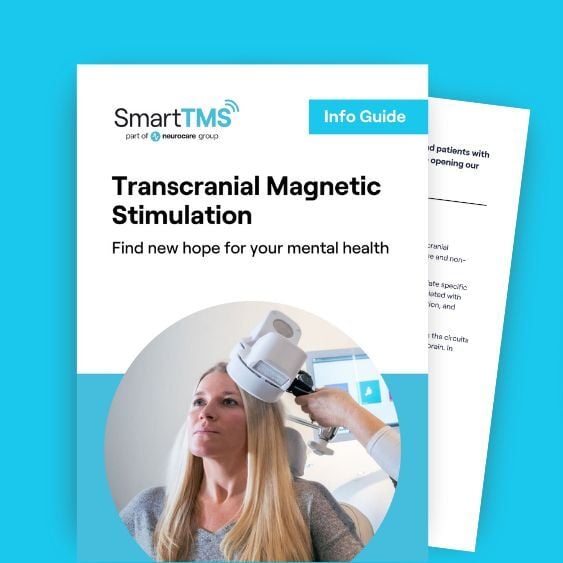rTMS in the Treatment of Addiction
January 16, 2020 - Smart TMS

When she’s not treating patients, Smart TMS practitioner, Lea, keeps up to date on all research surrounding the treatment of addiction with rTMS.
To date, there have been 18 published studies into the use of rTMS to reduce cocaine cravings. Here, we summarise some of the most well known studies.
Terraneo et al. (2016)
Overview
One of the most well known studies into using rTMS to reduce cocaine cravings was undertaken by Terraneo et al. (2016). Within this pilot study, 32 cocaine users were randomly assigned to one of two groups; One group received rTMS treatment and the other received medication.
Method
The group assigned to rTMS received treatment over the dorsolateral prefrontal cortex (DLPFC), which is located at the front of the brain. Over 29 days, high frequency rTMS treatment sessions were administered, lasting 13 minutes each.
Results
Of the patients treated with rTMS, 69% of patients did not relapse during the study, which is significantly better than patients receiving medication only. The findings suggest that rTMS is an effective treatment for cocaine cravings when the DLPFC is targeted.
Sanna et al. (2019)
Overview
Sanna et al. (2019) evaluated the use of intermittent Theta Burst Stimulation (iTBS) to treat cocaine addictions. Theta Burst is a high frequency, intense brain stimulation technique. The magnetic pulses of the rTMS machine and coil pulse multiple times per second, meaning that a treatment session typically lasts 5 minutes as opposed to 20-30 minutes. Sanna et al. compared the results of iTBS to those of rTMS in treating cravings for cocaine.
Method
The patients were split into two groups; 25 people received iTBS and a further 22 patients received rTMS. Both groups received 20 treatment sessions over four weeks, focusing on the prefrontal cortex.
Results
The results showed that iTBS produced results comparable to standard rTMS and is just as safe. Both treatments saw significant reductions in cocaine cravings, overall.
How does Smart TMS data match up?
We are especially proud of our recent audit (December 2019). By the end of a course of 15 sessions over three weeks, 80% of our patients were in remission from craving. One of the main reasons cocaine users give for relapsing is being unable to fight the cravings. By using rTMS treatment to tackle the cravings, the likelihood of relapse is greatly reduced.
If you would like to speak to a member of the team about rTMS for a cocaine addiction, please don’t hesitate to get in touch.
(UK)
- Tel: 0345 222 5678
- Email: info@smarttms.co.uk
(IE)
- Email: info@smarttms.ie
- Tel: 353 (01) 254 2514
- Website: www.smarttms.ie










